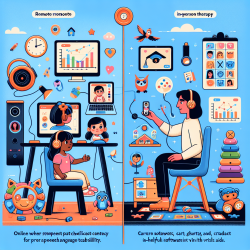Introduction
Arthritis, a condition often associated with adults, also affects children and adolescents. The recent study "Arthritis Among Children and Adolescents Aged <18 Years — United States, 2017–2021" provides significant insights into the prevalence and characteristics of arthritis in young populations. As practitioners in the field of speech-language pathology, understanding these findings is crucial for improving therapeutic outcomes for children with co-occurring conditions such as arthritis.
Key Findings from the Study
The study estimates that approximately 220,000 children and adolescents in the U.S. were diagnosed with arthritis between 2017 and 2021. The prevalence increases with age and is notably higher among non-Hispanic Black or African American children, those with anxiety or depression, physically inactive children, and those living in food-insecure or smoking households.
These findings emphasize the importance of addressing not only the physical symptoms of arthritis but also the associated mental health conditions and social determinants of health.
Implications for Speech-Language Pathologists
Speech-language pathologists (SLPs) play a critical role in the multidisciplinary care of children with arthritis. Here are some ways SLPs can implement the study's findings:
- Screening and Referral: Regularly screen for co-occurring conditions such as anxiety and depression. Early identification and referral to appropriate mental health services can significantly impact a child's overall well-being and therapy outcomes.
- Collaboration: Work closely with physical therapists and other healthcare providers to ensure a holistic approach to the child's care. Understanding the physical limitations due to arthritis can help tailor speech therapy sessions effectively.
- Family Education: Educate families about the importance of physical activity and a healthy lifestyle, which can help manage arthritis symptoms. Encourage families to engage in activities that promote physical and mental health.
Encouraging Further Research
The study highlights several areas where further research is needed, particularly in the development of self-management interventions and the impact of mental health treatment on arthritis outcomes. SLPs can contribute to this body of research by documenting and sharing their experiences and outcomes with children who have arthritis.
Conclusion
Understanding the prevalence and impact of arthritis in children is crucial for speech-language pathologists. By integrating the findings from this study into practice, SLPs can enhance the quality of care and outcomes for children with arthritis. For a more comprehensive understanding, practitioners are encouraged to delve into the original research paper.
To read the original research paper, please follow this link: Arthritis Among Children and Adolescents Aged <18 Years — United States, 2017–2021.










